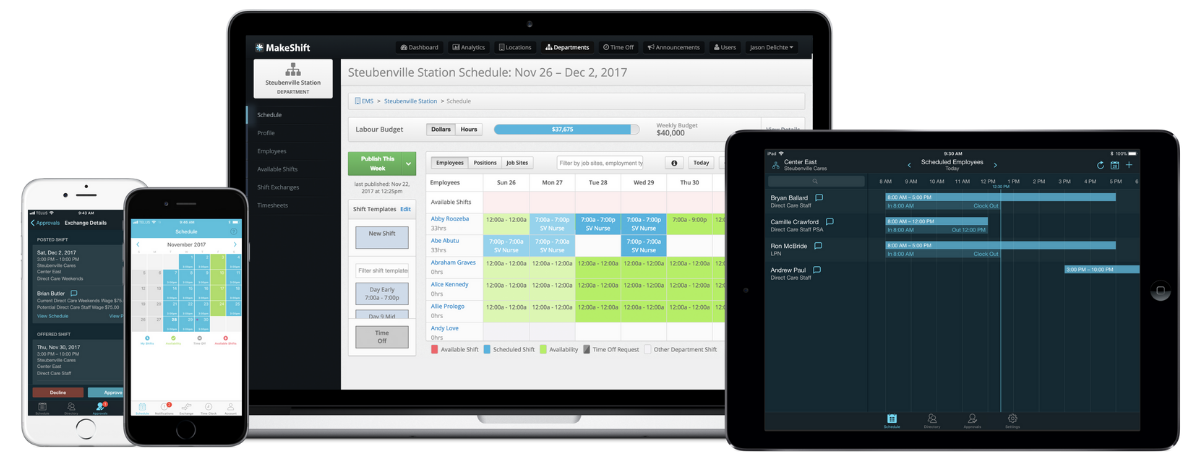In the rapidly evolving world of retail, you’re standing with your toes on the edge as your industry undergoes dramatic transformations.
Keeping pace with all the changes is about more than following trends — it's about deeply understanding the pulse of your staff.
And your role goes beyond sales and inventory management.
You're not just managing a store — you're leading a diverse group of people, each with unique needs and aspirations.
Today, we’ll address retail worker trends and statistics of 2025, offering insight and tips for empowering your team in today’s competitive retail environment.
- 5 Reasons to Pay Attention to Retail Industry Statistics
- 9 Retail Industry Stats & Trends in 2025
- Retail Worker Demographics
- Retail Workforce Trends & Statistics
- Retail Worker Well-Being Statistics
- Retail Worker Scheduling Statistics
- Address Retail Worker Scheduling Woes with MakeShift
- FAQ
5 Reasons to Pay Attention to Retail Industry Statistics
The retail industry is evolving — quickly. And what worked 4 years ago probably won’t keep today’s customers buying or talented employees on staff.
Staying current on what’s hot and what’s not in retail will help retain your employees and motivate customers.
If you’re still enamored with the good ol’ days of retail, we get it.
However, if you want a thriving retail business, we’ve got 5 reasons to keep your ear to the ground as to what’s happening with today’s retail workers and in the entire industry.
- Strategic Planning & Adaptation — Understanding retail industry trends and stats enables you to make strategic decisions. You’ll know how to adapt to changing market dynamics, consumer behaviors, and employee needs.
- Competitive Edge — The latest trends and statistics offer insight into what retail workers want regarding their jobs, schedules, and overall culture. This arms you with the knowledge to innovate and make your company a place workers want to be.
- Enhanced Employee Confidence — Knowledge of current trends tells you how to train staff to meet evolving customer preferences. You’ll boost employee confidence through preparation while enhancing customer satisfaction and loyalty.
- Resource Allocation — Trends and statistics offer guidance in efficiently allocating resources, whether investing in tech, staff training & benefits, or marketing strategies.
- Enhanced Employee Retention — Being informed about industry trends and statistics helps you better understand and address the needs and expectations of your workforce. This leads to improved job satisfaction, morale, and, ultimately, higher employee retention rates.
9 Retail Industry Stats & Trends in 2025
Let’s start with the retail industry as a whole. Familiarizing yourself with the latest retail trends will help you hire, train, and support your employees as your operation evolves.
What good is knowing about the trends if you aren’t sure how to adapt to them in your operation?
We did the research for you — try a few of these ideas out to see what works.
1. E-commerce Dominance — E-commerce continues to grow, with global sales projected to reach $8.1 trillion by 2026.
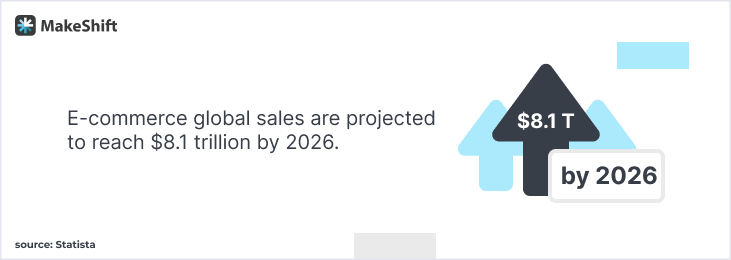
✶ What you can do:
- Expand Online Offerings — Your product range online should be as comprehensive as your in-store offerings.
- Optimize User Experience — Focus on website usability and mobile optimization to enhance customers’ online shopping experience.
- Invest in E-commerce Tech — Stay updated with the latest e-commerce tools and platforms to keep your online store competitive.
2. Consumer Safety Concerns — Privacy stats show roughly 81% of Americans are concerned about companies collecting private data.
✶ What you can do:
- Implement Robust Data Protection — Ensure your customer's data is secure and complies with data protection laws.
- Transparent Data Policies — Communicate your data usage policies to your customers.
- Build Trust — Use data ethically to build trust with your customers.
3. Self-Service Checkout Expansion — The demand for efficient, self-service checkout options is growing. The self-service checkout market was worth $3.44 billion in 2021.
It’s expected to grow at a rate of 13.3% between 2023 and 2030.
✶ What you can do:
- Invest in Self-Service Technology — Integrate self-service checkouts in your stores to meet customer demand for efficiency.
- Train Staff to Assist — Thoroughly train your staff to assist customers using self-service checkouts while keeping a personal touch.
4. Rise of Chatbots — The popularity of e-commerce chatbots has exploded recently. Gartner predicts they’ll be the primary customer service tool for 25% of companies by 2027.
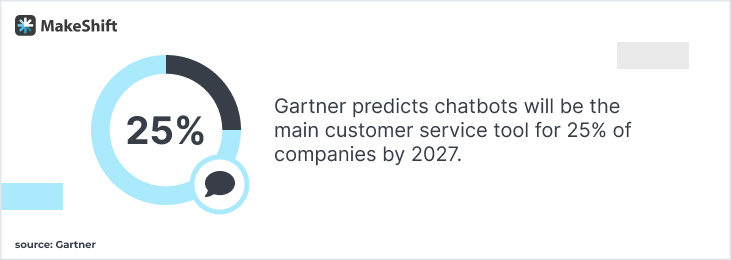
✶ What you can do:
- Implement Chatbots — Integrate chatbots into your online customer service strategy.
- Continuous Improvement — Regularly update your chatbots based on customer interactions and feedback.
- Human Touch — Ensure there’s an easy option for customers to reach human customer service reps when needed.
5. In-Store Appointment Booking — Personalized shopping experiences are HOT.
Appointment shopping lets customers reserve time slots for in-store browsing with the option of a personal shopper.
This strategy, blending omnichannel and experiential retail elements, enhances personalization and offers upscale, attentive customer service experiences.
✶ What you can do:
- Implement Booking Systems — Use an easy-to-use appointment booking system on your website and mobile app.
- Personalized Service — Train staff to provide a personalized experience for appointment shoppers.
- Promote Exclusivity — Use appointment shopping to offer exclusive deals or products.
6. 24/7 Customer Service — There’s a need for round-the-clock customer support, usually via AI chatbots. Retail Dive says 93% of customers would be more patient about shipment delays if the brand offered exceptional customer service.
✶ What you can do:
- Expand Service Hours — Consider extending your customer service hours or implementing 24/7 support.
- AI Integration — Use AI chatbots to provide out-of-hours support.
- Proactive Communication — Proactively inform customers about their orders, especially during delays.
7. Omnichannel Shopping — Integration of online / offline blended shopping experiences. Omnichannel shopping is today’s new norm.
Consumers want to be able to research online and buy in-store. Or vice versa. 60% say they research online before making a major purchase.
✶ What you can do:
- Seamless Integration — Ensure your online and offline channels seamlessly integrate.
- Unified Customer Experience — Provide a consistent customer experience across all channels.
- Enhanced Online Info — Provide detailed product information online to aid in pre-purchase research.
8. Shipping Transparency — Clear communication about shipping timelines is an absolute must. When shipping’s delayed, but consumers aren’t informed, 69.7% say they’re less likely to buy from that retailer again.
✶ What you can do:
- Clear Communication — ALWAYS communicate shipping timelines clearly and proactively update customers about delays.
- Real-Time Tracking — Offer real-time order tracking to keep customers informed.
- Flexible Shipping Options — Provide shipping options to cater to different customer preferences.
9. Sustainable Packaging — Consumer demand for sustainable packaging options is on the rise. According to Shorr’s Sustainable Packaging Consumer Report:
- 76% of consumers made a conscious effort to buy more sustainable products in the past year.
- 86% are more likely to purchase from retailers whose packaging is sustainable.
- 77% expect more brands to offer 100% sustainable packaging in the future.
- Eco-friendly Packaging — Shift to sustainable packaging.
- Educate Customers — Inform customers about your efforts in sustainable packaging.
- Continuous Improvement — Regularly evaluate, research, and improve your sustainability practices.
Retail Worker Demographics
Who are today’s retail workers? Knowing more about your workforce can help you better support them.
Want more info about your employees?
Consider sending out a survey to collect more demographic information to help you more deeply understand your staff.
Then, use that insight to tailor workplace policies, benefits, and initiatives to meet your team's specific needs.
We’ve given you a headstart here:
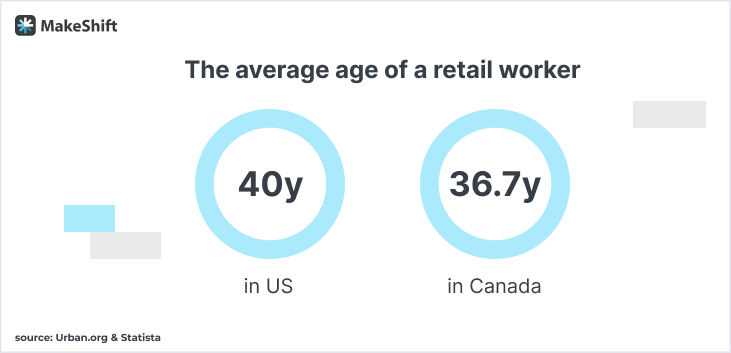
U.S. Retail Workers:
- 19,735,003 retail workers
- 50% men / 50% women
- Average age: 40
- Average Salary: $31,195 annually or $15 an hour.
Entry-level positions start at $27,300 a year, while most experienced workers make up to $46,680.
Canadian Retail Workers:
- 2.26 million retail workers
- 50% men / 50% women
- Average age: 36.7
- Average salary: $34,793 annually or $17.84 an hour.
Entry-level positions start at $29,250 annually, while most experienced workers make up to $48,750.
Retail Workforce Trends & Statistics
In addition to demographics, knowing what your employees want is important.
They’re much more likely to stick around if you address their needs.
1. Meaningful work — 77% of retail workers want their daily work to be meaningful, and 68% said their #1 goal at work is fulfillment in what they do.
Finding fulfillment can be tough for retail workers in an industry known for high turnover and temp work.
✶ What you can do:
- Foster Fulfillment — Create a work environment where employees feel their work is meaningful.
- Employee Engagement — Engage employees in decision-making and give them a sense of ownership.
- Give Kudos — Implement recognition & reward systems to acknowledge employee efforts.
2. Retention is based on value — Highly fulfilled employees stay with their organizations 3 years longer than unfulfilled employees. 40% of retail frontline employees want to quit their jobs in favor of more meaningful work.
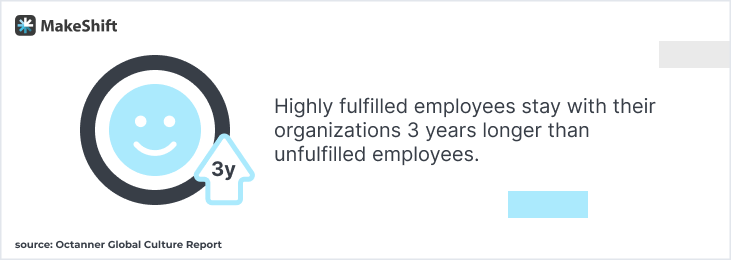
✶ What you can do:
- Prioritize Company Culture — Cultivate a culture where employees feel their work is meaningful and appreciated. Encourage a sense of purpose by involving employees in decision-making processes and recognizing their contributions.
- Personal and Professional Development Opportunities — Offer opportunities for personal and professional growth like:
- Training programs
- Skill development workshops
- Career advancement paths
When employees see a trajectory for growth within your organization, they’re more likely to feel fulfilled and motivated. - Work-Life Balance & Employee Well-being — Prioritize work-life balance and the overall well-being of your employees. A healthy work-life balance heavily contributes to employee satisfaction and fulfillment, increasing retention rates.
Offer flexible working hours, more interactive staff scheduling, and wellness perks like gym memberships, PTO, and EAPs.
3. Leaders are burning out — 47% of retail leaders said their work is exhausting partly due to the constantly changing retail environment and high turnover.
✶ What you can do:
- Support for Leaders — Provide adequate support and resources to leaders to manage workloads.
- Leadership Training — Offer training programs focused on stress management and leadership skills.
- Work-Life Balance — Encourage a healthy work-life balance for leaders, including paid time off to rest and recharge.
4. The rise of generalists — Workers with a breadth of knowledge and skills who thrive in ambiguity are known as Generalists.
57% of retail employees consider themselves Generalists.
Generalists’ connection, collaboration, and innovative thinking skills can help your retail organization expand and evolve offerings and services.
✶ What you can do:
- Broad Skill Development — Encourage your team to develop a broad range of skills.
- Flexible Role Design — Design roles that allow employees to utilize all their skills.
- Encourage Innovation — Create an environment that encourages innovative thinking and problem-solving.
Retail Worker Well-Being Statistics
If you want your retail business to thrive, it starts with your staff’s well-being.
Here’s what we’ve found about retail workers’ well-being.
- 2 out of 5 retail workers say their mental health has declined over the last year.
- 1 in 4 retail workers reported high on-the-job anxiety.
- Over half of retail associates said the benefit they want most is paid mental health days.
- Burnout risk is high — 32.2% of full-time retail workers have another source of income:
- 11% have another retail job
- 43% have a non-retail job - 41% of retail workers say stress from customers has made them cry.
How to address retail worker well-being:
- Mental Health Support — Offer mental health support and resources, including paid mental health days.
- Stress Management Training — Provide training on stress management and dealing with demanding customers.
- Work-Life Balance — Encourage a healthy work-life balance to reduce burnout risk.
Retail Worker Scheduling Statistics
We all know retail shift scheduling is challenging. Creating a schedule that aligns with employee availability and floor traffic is no easy feat.
Check out these retail employee scheduling stats:
- 80% of workers have little input into their schedules.
- 69% are required by their employer to keep their schedules “open and available” to work whenever needed.
- 75% of retail workers want a more stable and predictable work schedule.
- 2/3 of retail employees have taken advantage of scheduling flexibility to balance priorities like attending school, working another job, or raising a family.
- 40% say they’ve been at their job longer than anticipated because of scheduling flexibility.
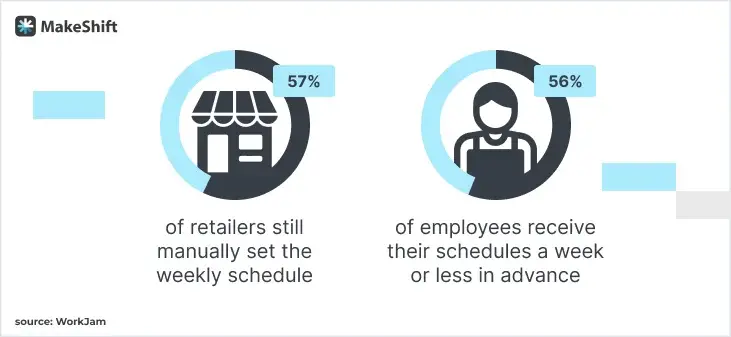
- 57% of retailers still manually set the weekly schedule, and 56% of employees receive their schedules a week or less in advance.
- 46% of retailers say they’re frequently understaffed.
How to address retail worker scheduling challenges:
- Employee Input in Scheduling — Involve employees in scheduling. Let them set their availability and shift preferences.
- Predictable Schedules — Provide more stable and predictable schedules so your staff can have more work-life balance.
- Scheduling Technology — Use scheduling software to improve efficiency and allow schedule access through a mobile app. With scheduling software, you can easily implement self-scheduling to offer more flexibility for your employees.
- Address Understaffing — Take proactive steps to address understaffing issues to reduce burnout and improve customer service.
Address Retail Worker Scheduling Woes with MakeShift
MakeShift allows you to spend more time on the floor interacting with staff and customers instead of managing schedules in several ways:
- Flexible Scheduling — Allow retail employees to have more control over their work hours, enabling them to balance work with personal commitments effectively.
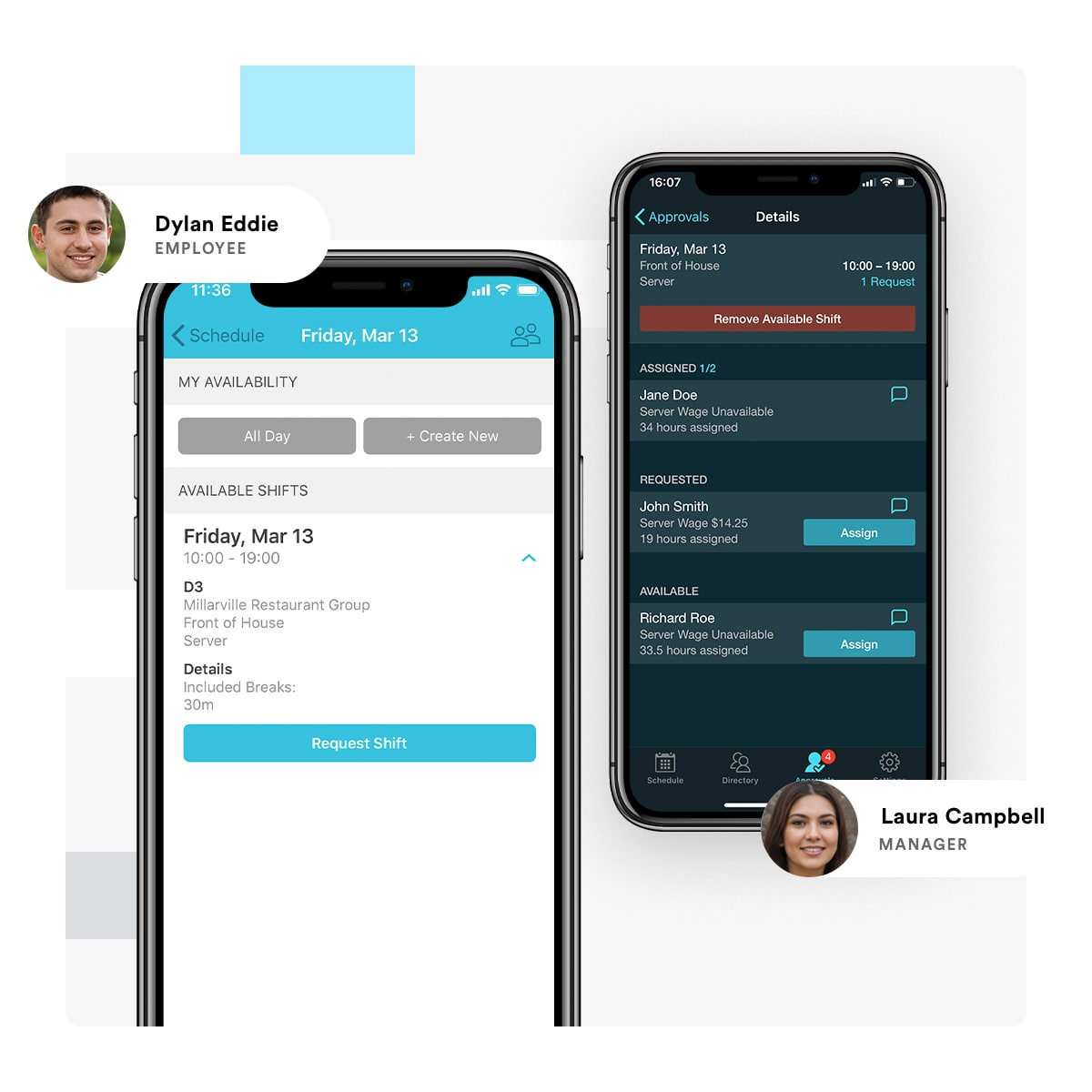
- Real-Time Updates — Provide immediate updates on shift changes, ensuring everyone is informed and reducing scheduling conflicts.
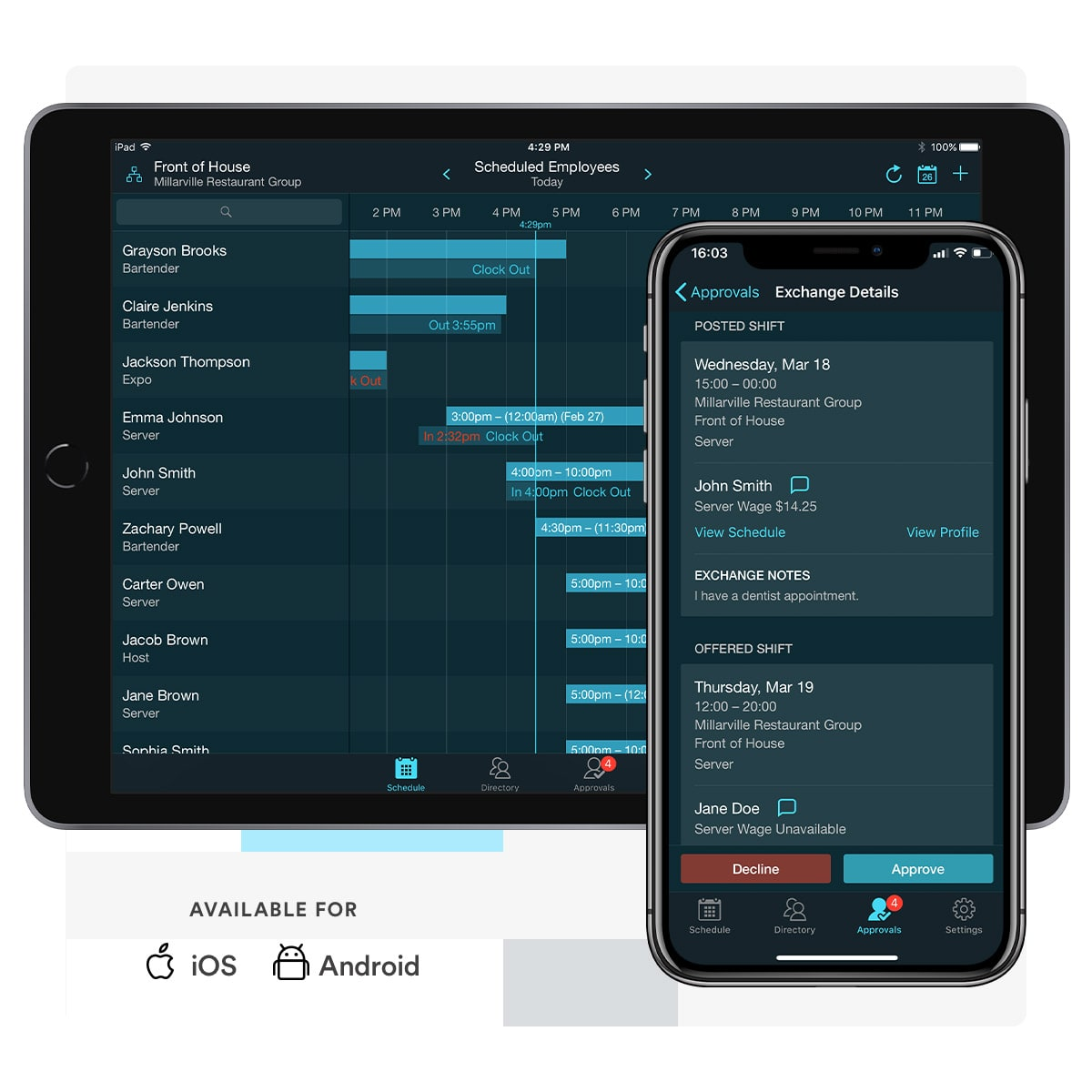
- AI-Powered Scheduling Platform — Go beyond predicting, automating, and building retail staff schedules. ShiftMate's suite of generative AI-powered modules helps you optimize your operations for success and employee wellness.
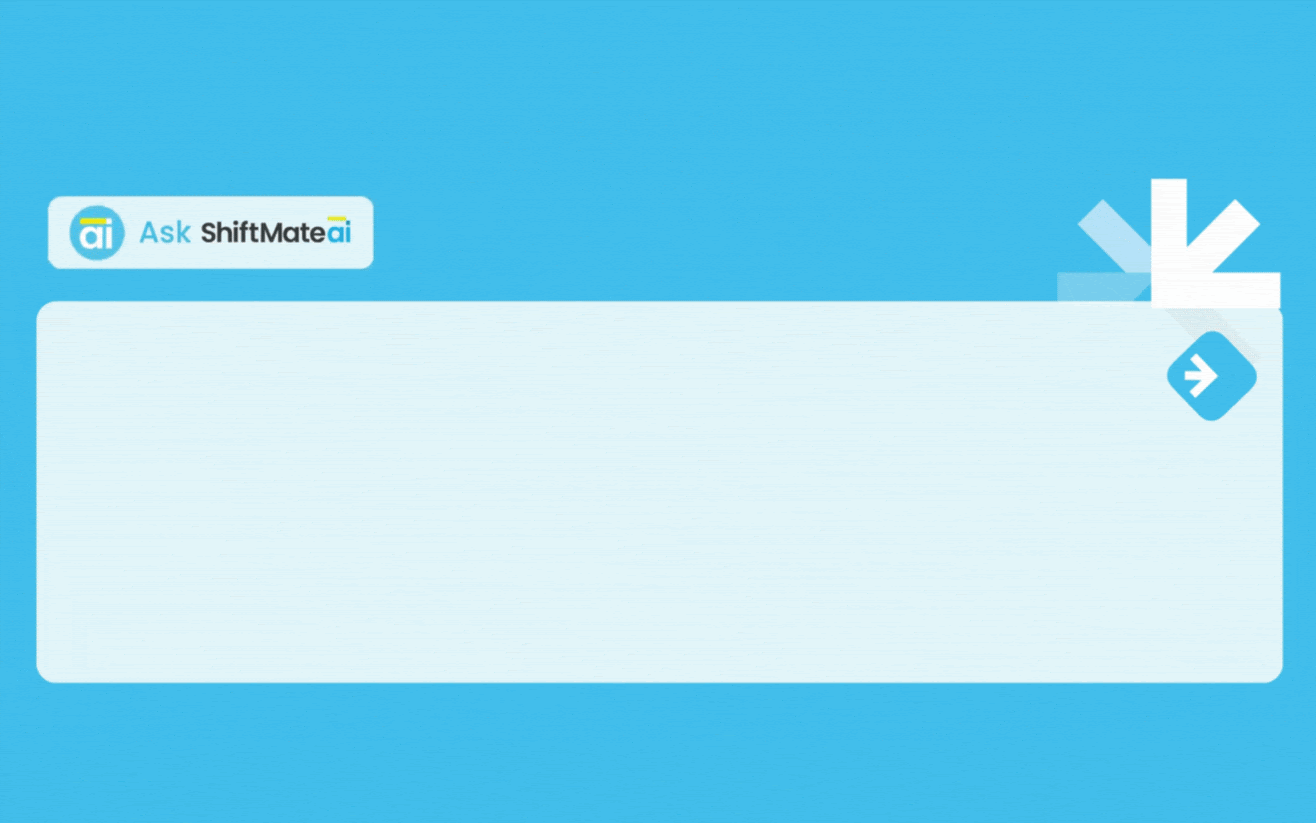
- Employee Availability Management — Facilitate easy management of employee availability, making it simpler to fill shifts and plan schedules.
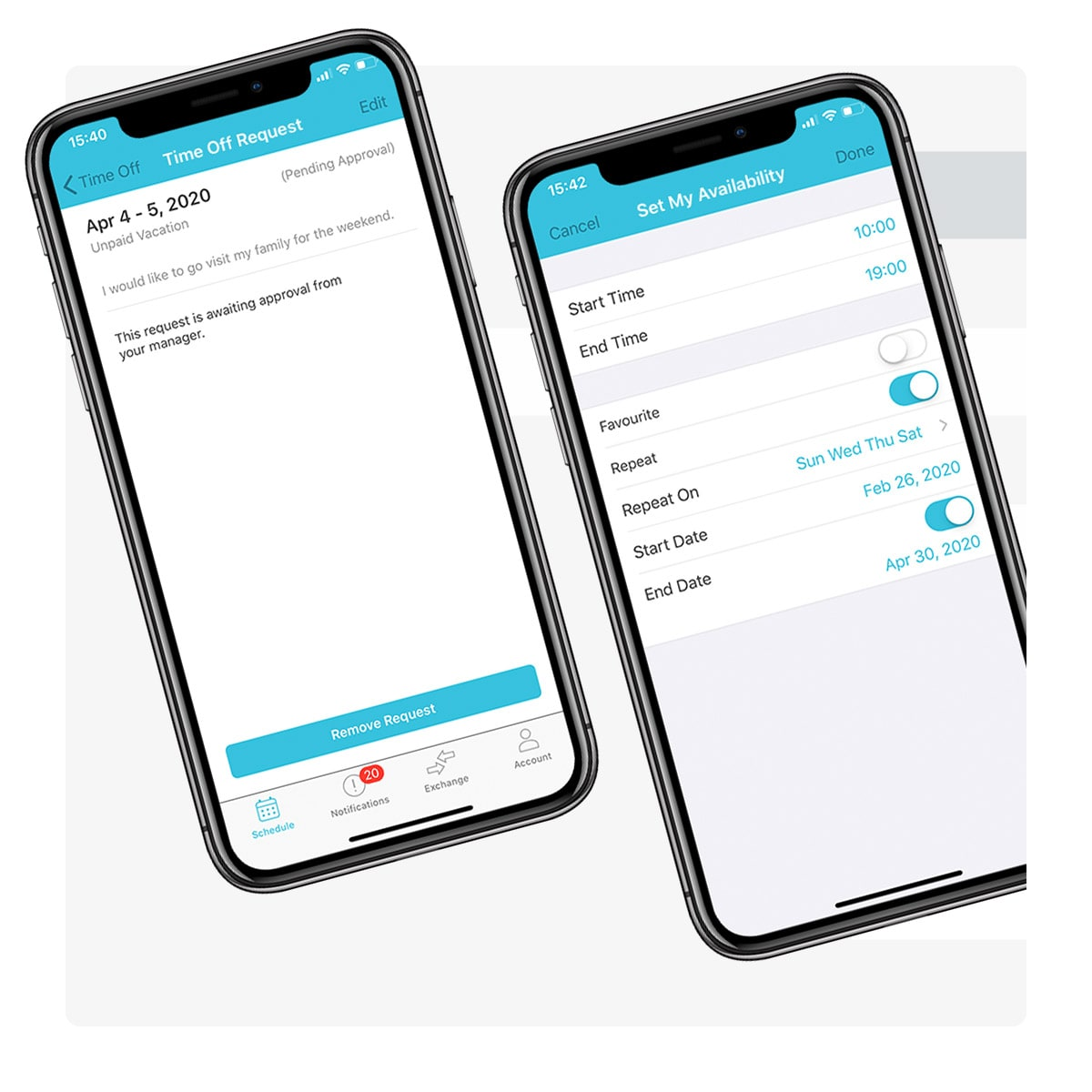
- Improved Communication — Streamline communication between managers and staff, making it easier to address shift changes and availability.
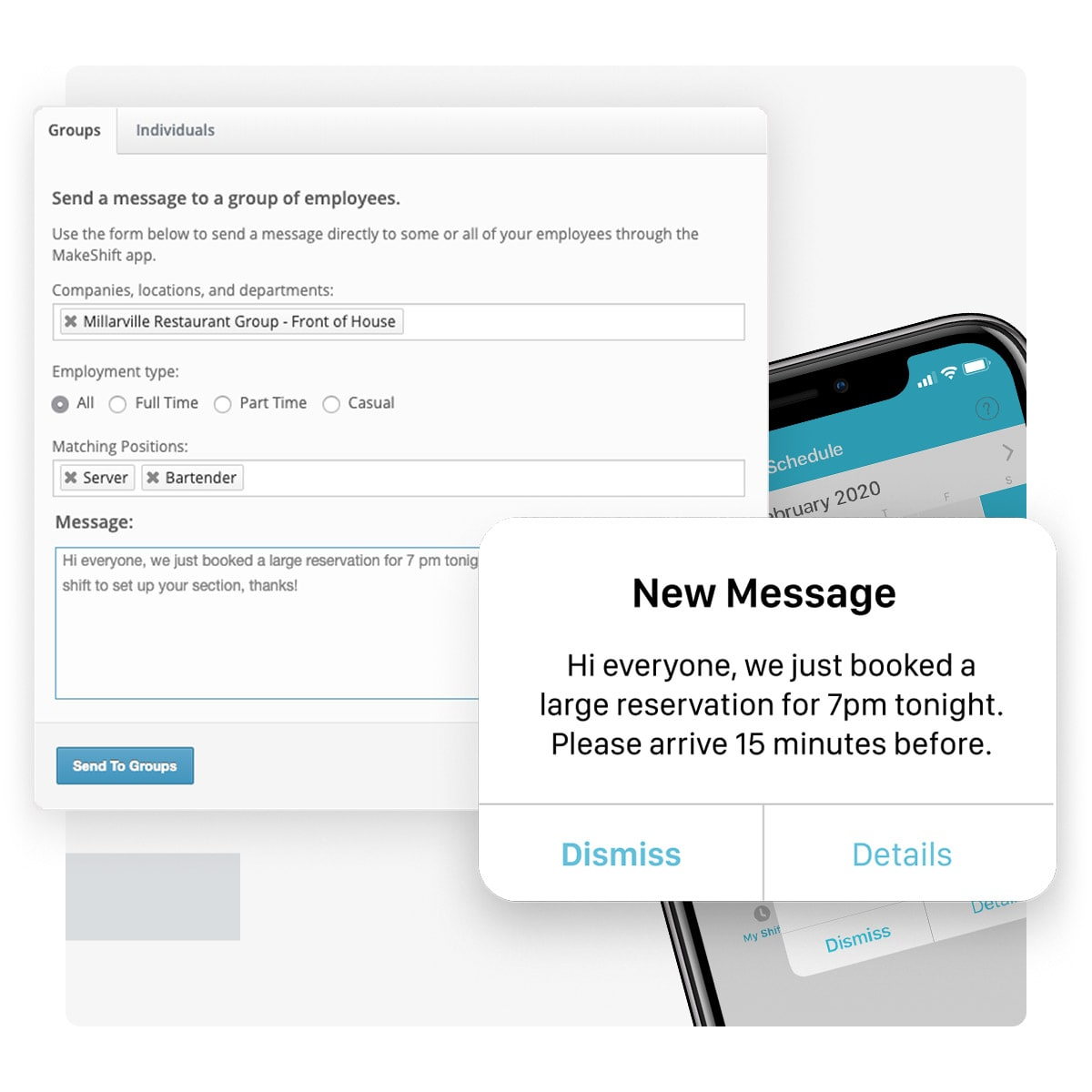
- Efficiency in Staffing — Help retail managers optimize staffing levels based on store traffic and peak hours, ensuring adequate coverage without overstaffing.
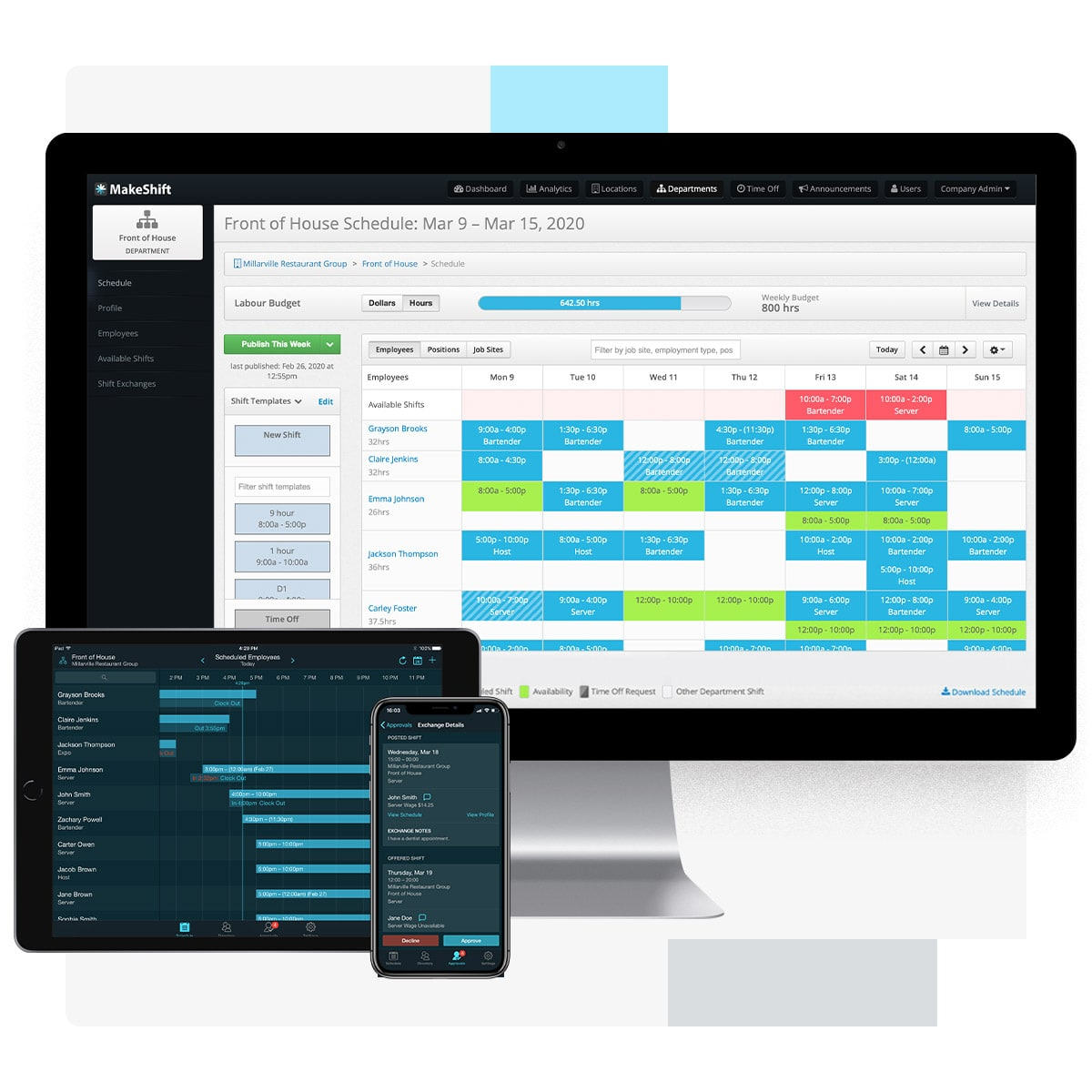
FAQ
What is the current retail sales trend?
Retail sales are steadily moving online, with a noticeable boost in e-commerce sales. There's also a trend towards sustainable and ethically sourced products as consumers become more environmentally conscious.
What are the key trends in the retail industry?
3 key trends in the retail industry target technology Integration, sustainability, and customer experience.
Retail Worker Statistics & Trends Get To the Heart of Things
To wrap things up, we’ll state the obvious. Staying ahead of retail worker trends and statistics is one of the keys to a thriving business.
From embracing e-commerce to focusing on sustainable practices, each trend offers unique opportunities for growth and innovation.
And at the heart of these changes lies in valuing and understanding your workforce.
Managing scheduling challenges is crucial — this is where MakeShift shines.
We offer a comprehensive solution for streamlined scheduling, better communication, and employee empowerment.
To keep your retail business competitive and to enhance your workforce management, schedule a free demo today.




